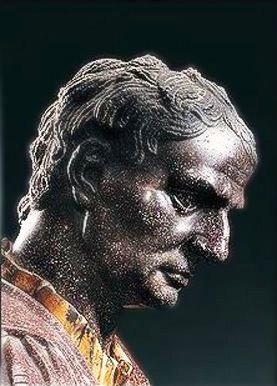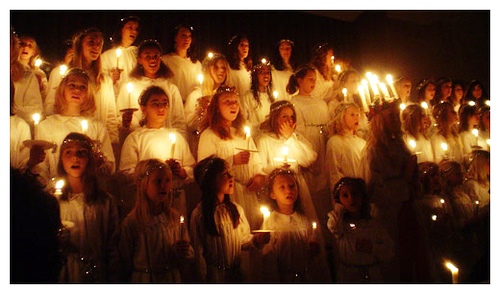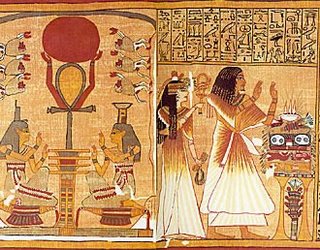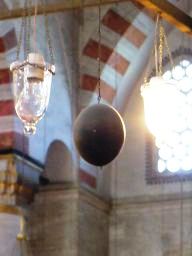
“Ostara” by Helena Nelson-Reed
THERE would be no glorious bursting forth of nature at Easter-time without the cyclic journey of the Sun.
The Sun-cycle ushers springtime into the world above the equator, and the ancients regarded this as the reincarnation season of the year.
The celebration of Ēoestre or Ostara is an old pagan festival, and is the origin of the word Easter. She is the goddess who symbolized the dawn, the warm Spring sun, the resurrection of Spirit in Earth, and much more.
“There is a real Easter, a Sun-cycle—the time of Vernal Equinox, on March 21st, which brings spring-time to the world above the equator. The ancients regarded this as the re-incarnation season of the year. In the Northland, the goddess Ostara was worshipped as beautiful Queen of the Spring-time, and from Ostara, our word Easter comes.
“It is said that when Ostara first came to earth, at the very beginning of the world, she wondered what it was that she had been given to do as part of the world’s work. As she wondered, she noticed how dark and cold and dead everything seemed, though she knew, of course, that the Life in all things was only sleeping for awhile till it was time to waken again. Then it suddenly came to her that this was why she was on earth—to wake things up!”
In the legend, when the beautiful Goddess Ēoestre saw all this wonderful work of hers, she said: “Hereafter, every year I will have one day called Easter, after me. That day, all shall celebrate the awakening of Life from its winter sleep.”
Then shall all people be joyous and glad and give each other eggs as gifts, for the Egg shall be my symbol. So it is fitting, for all Life is first within the egg.

“All life in first within the egg.”
“Life laughs in bud and bloom
from out the bough,
‘Tis Easter now.
The Sun his golden journey makes
In circle wide across the sky.
O, Radiance, teach us how
To mirror in our eyes the gleam,
To let shine forth the Light we dream
This Easter now.”
The Eternal Verities,
The Easter Lesson, p. 251
Pysanky
The art of the decorated egg in Ukraine, or the pysanka, dates back to ancient times. Pysanky is a 4,000 year old tradition. No actual ancient examples exist, as eggshells are fragile.
Many Springs
Goddesses related to Ostara were known in ancient cultures around the Mediterranean, and were celebrated in the springtime: Aphrodite from Cyprus, Astarte from Phoenicia, Demeter from Mycenae, Hathor from Egypt, Ishtar from Assyria, and Kali from India.

Pusanka
Perhaps some of the most impressive egg designs of Easter are known as Pysanka. These Ukrainian treasures (examples here) are hollowed-out eggs decorated with traditional Ukrainian folk designs.
Sacred Symbol
The Norsemen were not the only peoples that exchanged colored eggs at the time of Vernal Equinox. The Egyptians regarded them as sacred symbols, and hung them in their temples.

Egyptian Aten Ankh
The cosmos in the form of an egg was the most widely diffused belief of antiquity. In the egg is Life, which is Light, and from the One white light come all the colors.
“The Egg was incorporated as a sacred sign in the cosmogony of every people on the Earth,” writes H. P. Blavatsky in The Secret Doctrine, “and was revered both on account of its form and its inner mystery.

Miracle from the egg.
“From a latent ‘nothing’ was produced an active something, needing only heat,” she says. “Gradually evolving and breaking its own shell, the creature appeared to be a self-generated, and a self-created being.”
This must have been a standing miracle from the beginning!
“The gradual development of the invisible germ within the closed shell, the inward working, without any apparent outward interference of force, symbolized the origin and secret of Being.”
Chicks Hatching
Kalahansa
In the symbolism of ancient thinkers, the Universe was produced by an Egg dropped into Chaos by an ever invisible, mysterious Bird called Kalahansa, “the swan in (Space and) Time.”
It was also the “Swan of Eternity,” who lays at the beginning a “Golden Egg.”
It typifies the great Circle, or O, itself a symbol for the universe and its spherical bodies.
Ö

Swan with her cygnets.
“As a Circle and a Sphere, the Golden Egg was chosen as the symbolic representation of the Universe, and of our earth, and the ovi-form shape of our globe must have been known from the beginning of symbology, since it was so universally adopted.”
– H. P. Blavatsky, “The Mundane Egg”
Easter Song
(Theosophy School Songbook)
Click here or below to view or download
the original sheet music.
Θ
Life laughs in bud and bloom
from out the bough,
‘Tis Easter now!
The Sun his golden journey makes
In circle wide across the sky.
O, Radiance, teach us how
To mirror in our eyes the gleam,
To let shine forth the Light we dream,
This Easter now!
![]()
 º
º
The pysanky have been found in many sites, and fragments have been discovered in the graves of both children and adults.
![]()
Trypillian Pysanky:
Modern Expressions of Neolithic Designs
________________________________________________
The first manifestation of the Cosmos in the form of an egg was the most widely diffused belief of antiquity. It was a symbol adopted among the Greeks, the Syrians, Persians, and Egyptians.

Egyptian Ritual
In an Egyptian Ritual, Seb, the god of Time and of the Earth, is spoken of as having laid an egg, or the Universe, “an egg conceived at the hour of the great one of the Dual Force.”
Sun-Worshipers
“At the 5000 year old Loughcrew megalithic cairn T in Ireland, the rising sun on the mornings around the equinoxes (March and September) illuminate the passage and chamber.
In the video below the inner illumination by the sun in the chamber during the Spring Equinox has been compressed from 50 minutes to 40 seconds.
“The backstone of the chamber with its engraved sun symbols is bathed in a blaze of golden light during the 50 minute illumination. Sunbeam moving from the backstone to the sill stone and the stones in the main chamber.”

Equinox sunbeam passage of Cairn T-Loughcrew
“The ancient sun-worshipers regarded the Great Spirit as a nature-god, identical with nature,” writes H. P. Blavatsky in Isis Unveiled, “and the sun as the deity, ‘in whom the Lord of life dwells.’ The sun is the source of the souls and of all life.”
The Living Universe
Duane Elgin’s The Living Universe explores a new paradigm that is vital for building a sustainable future; namely, a shift from regarding the universe as fragmented and dead to seeing it as unified and alive.
Universal Egg Symbols
With the Greeks the “Orphic Egg” is described by Aristophanes, and was part of the Dionysiac and other mysteries.

Orphic Egg
With the Egyptians, “Ra” is shown, like the Hindu Brahma, gestating in the Egg of the Universe.

Egyptian RA
The Mundane Egg
Its consecration and significance was explained by Porphyry who called it a representation of the world.

Porphyry
(All above collated from The Secret Doctrine 1:359)
ÿ
Change in Consciousness
Environmental and social justice activist Julia Butterfly Hill explains that when we act from a consciousness of oneness we make mindful decisions that consider the whole rather than just ourselves.
Goddess of Spring
The names Oestre or Eastre, mean “movement towards the rising sun,” and in Germany is named Ostara.

Isis – Egyptian Solar Deity
As a solar deity, Ostara is celebrated on March 21st at the Spring Equinox, because the days are brighter and growing longer.
She is a goddess of the dawn and the spring, and her name derives from words for dawn, the shining light arising from the east.
Ë
Our words for the female hormone “estrogen” derives from her name.
Universe: A Living System

§
Duane Elgin is an internationally recognized speaker, author, and social visionary who looks beneath the surface turbulence of our times to explore the deeper trends that are transforming our world.
Ostara
“Ostara is a fertility Goddess, the northern counterpart of Astarte and Ishtar. She is associated with the Moon, with eggs, Dawn, and the East – all symbolizing her primary qualities of bringing birth, rebirth and renewal to a winter-weary world.
She is originally associated with the Hare. Unlike rabbits, hare babies are born fully furred, with their eyes open.

Baby Hare
“The word Easter evidently comes from Ostara, the Scandinavian goddess of spring. She was the symbol of the resurrection of all nature and was worshipped in early spring. Eggs were symbolical from an early time.
It was a custom with the pagan Norsemen at that time to exchange coloured eggs called the eggs of Ostara. These have now become Easter-Eggs.

Scandinavian Ritual
Dazhboh
As in many ancient cultures, Ukrainians worshipped a sun god (Dazhboh). The sun was important – it warmed the earth and thus was a source of all life.
Eggs decorated with nature symbols became an integral part of spring rituals, serving as benevolent talismans.
In pre-Christian times, Dazhboh was one of the main deities in the Slavic pantheon; birds were the sun god’s chosen creations, for they were the only ones who could get near him.

Sun God Dazhboh
Humans could not catch the birds, but they did manage to obtain the eggs the birds laid. Thus, the eggs were magical objects, a source of life.

Ostara (1884) by Johannes Gehrts. The goddess flies through the heavens surrounded by beams of light, and animals.
With the advent of Christianity, via a process of religious syncretism, the symbolism of the egg was changed to represent, not nature’s rebirth, but the rebirth of man. Christians embraced the egg symbol and likened it to the tomb from which Christ rose.
Christian or Pagan?
Acharya was a scholar classically educated in archaeology, history, mythology and languages. Acharya specializes in religion and mythology, critiquing and comparing them, and providing unique insights into their origins.

Acharya
Although born into a Christian (Congregationalist Protestant) family, Acharya does not subscribe to any particular religion, nor is she a hardcore atheist.
Ψ
A religious scholar, Acharya was made a fellow of the Committee of Scientific Examination or Religion, examines the connections between religious belief and our ancient connection with the Sun.

Egyptian Symbols
Acharya was also a member of the American School of Classical Studies at Athens, Greece, and speaks Greek, French, Spanish, Italian, German and Portuguese.
Acharya will challenge your beliefs if you have had any form of religious upbringing, but if you watch and listen closely and add the dots together you will see that her conclusions have a solid [and Theosophical] grounding.
Mundane Egg Myths
With the acceptance of Christianity in 988, the decorated pysanka, in time, was adapted to play an important role in Ukrainian rituals of the new religion.
Many symbols of the old sun worship survived and were adapted to represent Easter and Christ’s Resurrection.
†

The Christ Sun
“As expressed in Asgard And The Gods: ‘Christianity put another meaning on the old custom, by connecting it with the feast of the Resurrection of the Saviour,
who, like the hidden life in the egg, slept in the grave for three days before he awakened to new life.
♣
“This was the more natural,” Blavatsky writes in the Theosophical Glossary, “since Christ was identified with that same Spring Sun which awakens in all his glory, after the dreary and long death of winter.

Spring Sun
“There was the ‘Mundane Egg’, in which Brahma gestated, with the Hindus the Hiranya-Gharba, and the Mundane Egg of the Egyptians, which proceeds from the mouth of the ‘unmade and eternal deity,’ Kneph, and which is the emblem of generative power.
“The Egg of Babylon, which hatched Ishtar, and was said to have fallen from heaven into the Euphrates.

Ishtar
“Eggs were symbolical from an early time. There was the “Mundane Egg”, in which Brahmâ gestated, with the Hindus the Hiranya-Gharba, and the Mundane Egg of the Egyptians, which proceeds from the mouth of the ‘unmade and eternal deity,’ Kneph, and which is the emblem of generative power. Therefore coloured eggs were used yearly during spring in almost every country.

Egyptian Mundane Egg
“In Egypt they were exchanged as sacred symbols in the spring-time, which was, is, and ever will be, the emblem of birth or rebirth, cosmic and human, celestial and terrestrial.”
They were hung up in Egyptian temples and are so suspended to this day in Mahometan mosques.
– H. P. Blavatsky
ø

The Blue Mosque
ô
Happy Easter!
√

Easter Greetings!










Bruce: Thanks for the five minutes of pure laughter! J
>
LikeLike
Thanks for your comment!
LikeLike
Thank you so much for this,TW, so fulfilling…Theosophy teaches us and urges us to compare religions and cultures, giving us a better view of the Ancient Wisdom and it’s Law as the source of them all…this wonderful time of year, and the other cycles, make clear and re-emphasize these truths…and it’s so much fun! Happy Easter! 🐣💛🤗😍🖐🏾
LikeLiked by 1 person
Indeed we hold, “To mirror in our eyes the gleam”! 🙂
LikeLike